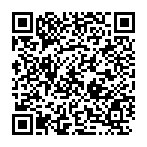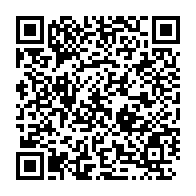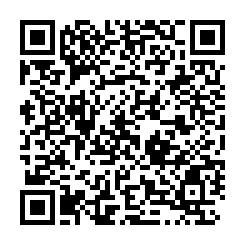Free Statistics
of Irreproducible Research!
Description of Statistical Computation | |||||||||||||||||||||||||||||||||||||||||||||
|---|---|---|---|---|---|---|---|---|---|---|---|---|---|---|---|---|---|---|---|---|---|---|---|---|---|---|---|---|---|---|---|---|---|---|---|---|---|---|---|---|---|---|---|---|---|
| Author's title | |||||||||||||||||||||||||||||||||||||||||||||
| Author | *The author of this computation has been verified* | ||||||||||||||||||||||||||||||||||||||||||||
| R Software Module | rwasp_bidensity.wasp | ||||||||||||||||||||||||||||||||||||||||||||
| Title produced by software | Bivariate Kernel Density Estimation | ||||||||||||||||||||||||||||||||||||||||||||
| Date of computation | Mon, 10 Nov 2008 06:30:59 -0700 | ||||||||||||||||||||||||||||||||||||||||||||
| Cite this page as follows | Statistical Computations at FreeStatistics.org, Office for Research Development and Education, URL https://freestatistics.org/blog/index.php?v=date/2008/Nov/10/t1226323913n0qqg8lqxucfj81.htm/, Retrieved Sun, 19 May 2024 08:46:25 +0000 | ||||||||||||||||||||||||||||||||||||||||||||
| Statistical Computations at FreeStatistics.org, Office for Research Development and Education, URL https://freestatistics.org/blog/index.php?pk=23042, Retrieved Sun, 19 May 2024 08:46:25 +0000 | |||||||||||||||||||||||||||||||||||||||||||||
| QR Codes: | |||||||||||||||||||||||||||||||||||||||||||||
|
| |||||||||||||||||||||||||||||||||||||||||||||
| Original text written by user: | |||||||||||||||||||||||||||||||||||||||||||||
| IsPrivate? | No (this computation is public) | ||||||||||||||||||||||||||||||||||||||||||||
| User-defined keywords | |||||||||||||||||||||||||||||||||||||||||||||
| Estimated Impact | 160 | ||||||||||||||||||||||||||||||||||||||||||||
Tree of Dependent Computations | |||||||||||||||||||||||||||||||||||||||||||||
| Family? (F = Feedback message, R = changed R code, M = changed R Module, P = changed Parameters, D = changed Data) | |||||||||||||||||||||||||||||||||||||||||||||
| F [Bivariate Kernel Density Estimation] [Various EDA - Biv...] [2008-11-10 13:30:59] [6912578025c824de531bc660dd61b996] [Current] - D [Bivariate Kernel Density Estimation] [Q1] [2008-11-11 16:54:29] [2b46c8b774ad566be9a33a8da3812a44] F D [Bivariate Kernel Density Estimation] [Q1] [2008-11-11 16:58:31] [2b46c8b774ad566be9a33a8da3812a44] F [Bivariate Kernel Density Estimation] [] [2008-11-11 19:55:09] [4ddbf81f78ea7c738951638c7e93f6ee] | |||||||||||||||||||||||||||||||||||||||||||||
| Feedback Forum | |||||||||||||||||||||||||||||||||||||||||||||
Post a new message | |||||||||||||||||||||||||||||||||||||||||||||
Dataset | |||||||||||||||||||||||||||||||||||||||||||||
| Dataseries X: | |||||||||||||||||||||||||||||||||||||||||||||
356,2 359,5 368,4 371 397,5 416,7 413,2 424,3 415 421,7 422,1 429,2 452,1 471,5 488,3 506,2 517,3 538,6 545,3 546,7 540,3 549,2 563,9 581,7 590,7 594,1 604 628,1 662,4 688,6 705,9 701,5 686,2 645,7 668,7 696,7 715,5 741,4 754,3 771,3 797,7 809,9 790,1 830,3 847,7 834,8 824,5 764,6 780 803,2 751,1 755,2 708,2 685,4 680 710,6 702,8 656,3 575,6 567,2 545,2 | |||||||||||||||||||||||||||||||||||||||||||||
| Dataseries Y: | |||||||||||||||||||||||||||||||||||||||||||||
152823,6 123780,5 159987,1 139603,7 177831,2 173656,9 252392 228029 197300 214088 160275 186851 227777 246899 295338 243847 324602 347066 407916 312914 326127 394369 310078 422770 417974 402347 360809 298289 375873 407210 413968 457532 695731 544623 292833 534403 517030 455714 471401 451493 480615 568272 650780 553643 780711 650724 586345 725173 701257 859063 789842 512707 780845 637804 640694 553416 554622 616736 536994 407237 618796 | |||||||||||||||||||||||||||||||||||||||||||||
Tables (Output of Computation) | |||||||||||||||||||||||||||||||||||||||||||||
| |||||||||||||||||||||||||||||||||||||||||||||
Figures (Output of Computation) | |||||||||||||||||||||||||||||||||||||||||||||
Input Parameters & R Code | |||||||||||||||||||||||||||||||||||||||||||||
| Parameters (Session): | |||||||||||||||||||||||||||||||||||||||||||||
| par1 = 50 ; par2 = 50 ; par3 = 0 ; par4 = 0 ; par5 = 0 ; par6 = Y ; par7 = Y ; | |||||||||||||||||||||||||||||||||||||||||||||
| Parameters (R input): | |||||||||||||||||||||||||||||||||||||||||||||
| par1 = 50 ; par2 = 50 ; par3 = 0 ; par4 = 0 ; par5 = 0 ; par6 = Y ; par7 = Y ; | |||||||||||||||||||||||||||||||||||||||||||||
| R code (references can be found in the software module): | |||||||||||||||||||||||||||||||||||||||||||||
par1 <- as(par1,'numeric') | |||||||||||||||||||||||||||||||||||||||||||||





